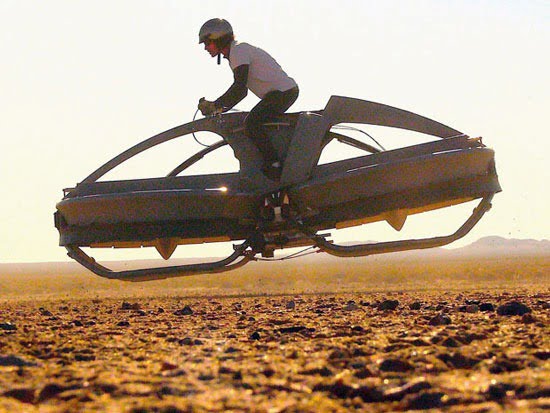
All right, we’ve grasped the plan: the future belongs to flying cars that will shatter every norm of urban planning, sever all ties with the glorious asphalt boulevards and urgently impose the need for a radical redesign of cities (which will require flattening the old, beloved cities we now inhabit… but that’s another story). But what about those who don’t click with tin-can, self-propelled private spaces, who hate stuffing groceries into the trunk and sticking a “don’t speed, Dad” photo on the dash, yet love driving, travelling and wind whipping through their hair? What about motorcycle lovers? Here’s the answer: Aero-X! In reality it’s a hover-craft that can carry 2 passengers at 70 km/h, three metres above the ground (and those figures are for the prototype; the commercial version scheduled for 2019 will have clearly improved specs).
Its core flight technology is nothing new – hovercraft have existed for decades. The innovations, however, lie in solving tough mechanical challenges related to stability and control, which had doomed every previous attempt to build such a vehicle. First, dedicated sensors in the handlebars, seat and knee-contact points constantly record the rider’s body position and movements in order to correct the craft’s course and deliver a faithful motorcycle-like riding experience. Next, a second sensor group – electronic gyroscopes and accelerometers – takes over flight/riding safety, especially when the vehicle encounters strong, sudden gusts: technology borrowed from drones. All data, captured every moment of the flight, feeds to a central computer that controls and adjusts riding behaviour while still leaving the pilot with the illusion of driving and “freedom.” And if the Aero-X designers read Cyborg, we’d suggest they build the right apps so the kamikaze of tomorrow can pick a riding mode from a smartphone: burn-outs, wheelies, knee-down on the left lane, weaving through traffic at rush hour, helmet-elbow-flip-flop, full-throttle and hard shifts… all those things that have given riders countless hours of driving pleasure—even if only in a virtual version supervised by the computer…
